Photo: Ken Friedman
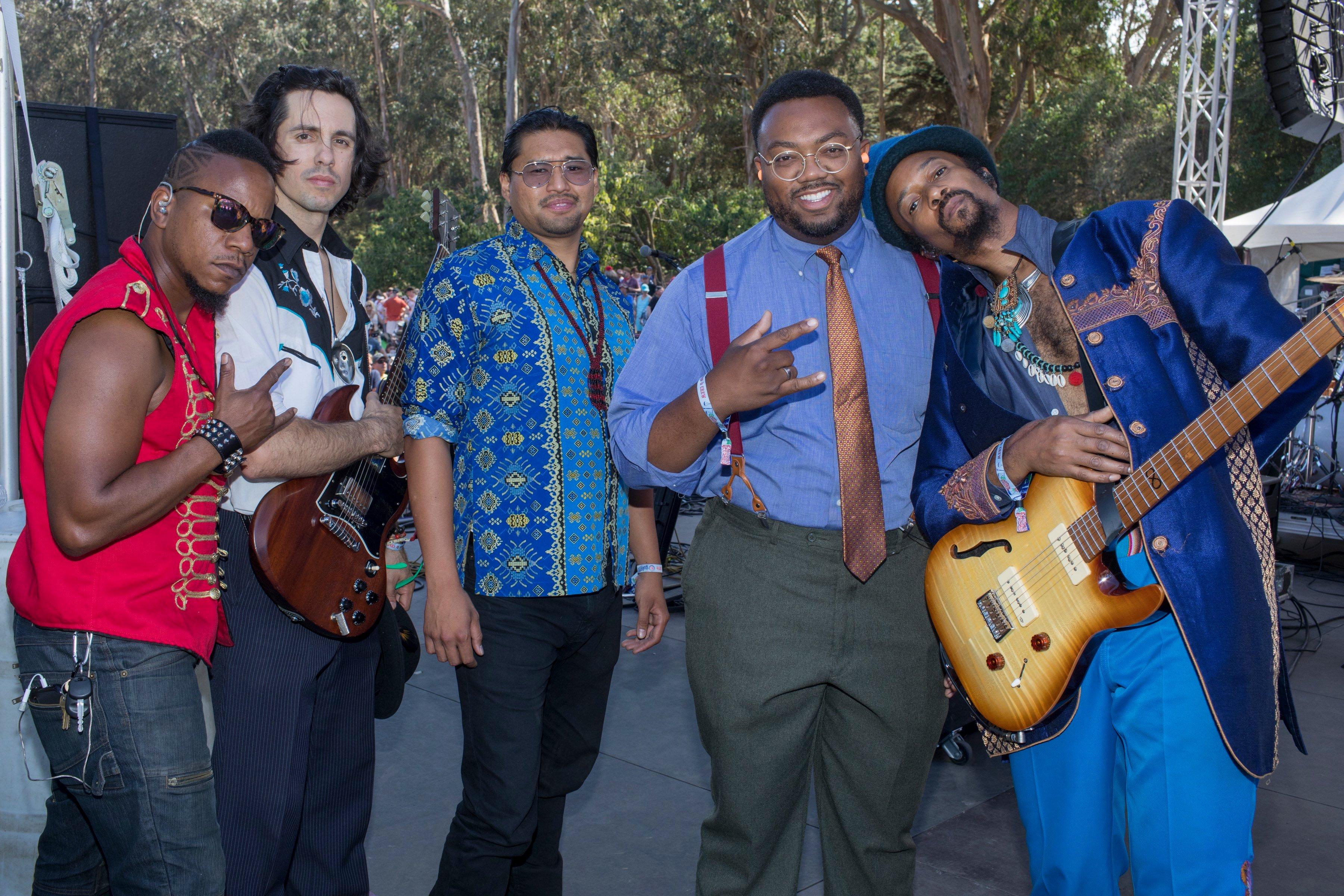
Fantastic Negrito at Hardly Strictly 2019
news
Hardly Strictly Bluegrass Will "Let The Music Play On" With Virtual 2020 Festival Featuring New & Archival Shows
Since the beloved, free music festival will not be able to take place in its home of Golden Gate Park this year, they will be hosting an epic online event Oct. 2–4
Today, July 27, Hardly Strictly Bluegrass unveiled their plans for a virtual 20th anniversary celebration, along with the (unsurprising) news that the festival would not be able to take place in person this year. From Oct. 2-4, when the fest would've taken place this year, Let The Music Play On will keep the spirit of Hardly Strictly alive with music and memories from the best in American Roots music and beyond.
WATCH LIST: Free Online Livestream Concerts To Catch During Coronavirus Quarantine
Held during the first weekend of October in San Francisco's lush Golden Gate Park, the free three-day event draws in over 750,000 people for the best in bluegrass, folk, soul, alternative music and more. As the ongoing coronavirus pandemic has derailed festival and live events of all sizes, many have gotten creative with livestream concerts, archival shows, fan engagement and more.
With Let The Music Play On, Hardly Strictly is combining all of those, with a three-day event featuring new performances, archival sets from the vault and curated memories from fans. Past attendees are encouraged to submit their favorite event memories in the form of words, photos and videos to memories@hardlystrictlybluegrass.org for possible inclusion in the online event because "the HSB community is what gives the festival life."
Read & Watch: From Foo Fighters To H.E.R., Chris Martin To Mavis Staples, Here's Who Rocked The GRAMMY Prince Tribute
"The October broadcast will feature new performances from the expansive range of Hardly Strictly Bluegrass artists that include first-time performers to legends of American Roots music, along with archival footage from the festival's past two decades and memories from fans, performers, and staff and priceless gems from the festival's rich history," the press email explains.
GRAMMY winners Booker T. Jones, Mavis Staples, Fantastic Negrito, John Prine, Asleep At The Wheel and Emmylou Harris, Latin GRAMMY winners/GRAMMY nominees Flor De Toloache, GRAMMY nominee Chris Isaak, Grateful Dead hero Bob Weir and rising Nashville star Adia Victoria, along with many more class acts, have performed at Hardly Strictly over the years.
"The festival…was founded by [late finance executive and philanthropist] Warren Hellman [in 2001] on ten pillars: community, joy, creativity, collaboration, freedom, peace, love, respect, gratitude, and spirituality. It was Hellman's gift to the City of San Francisco, offering a free outdoor festival in the historic Golden Gate Park that is a celebration of American roots music," the email notes.
"While we know we can't replace the feeling of being together physically, the safety of our attendees, artists, volunteers, and staff are our highest priority and our team has been hard at work creating a vibrant broadcast in line with what attendees have come to expect from HSB: community, discovery, and the all-time best in roots music," festival advisor Mick Hellman (and Warren Hellman's son), added. "We're excited to share parts of HSB that aren't feasible in a festival environment such as screening archival footage, sharing memories, and shining a spotlight on our non-profit partners."
The fest also announced the Hardly Strictly Music Relief Fund: Bay Area, a $1.5 million COVID-19 relief initiative for local San Francisco Bay Area musicians and venues. American Roots artists based in the Bay can apply for the one-time grants of up to $2,000, while local venues "with a track record of presenting and supporting roots music" are eligible to be considered for $200,000 grants.
More info on the Oct. online event, including the lineup, will be announced later at hardlystrictlybluegrass.com.
Lollapalooza Announces Lolla2020 Virtual Fest Celebration In Place Of Cancelled In-Person Event
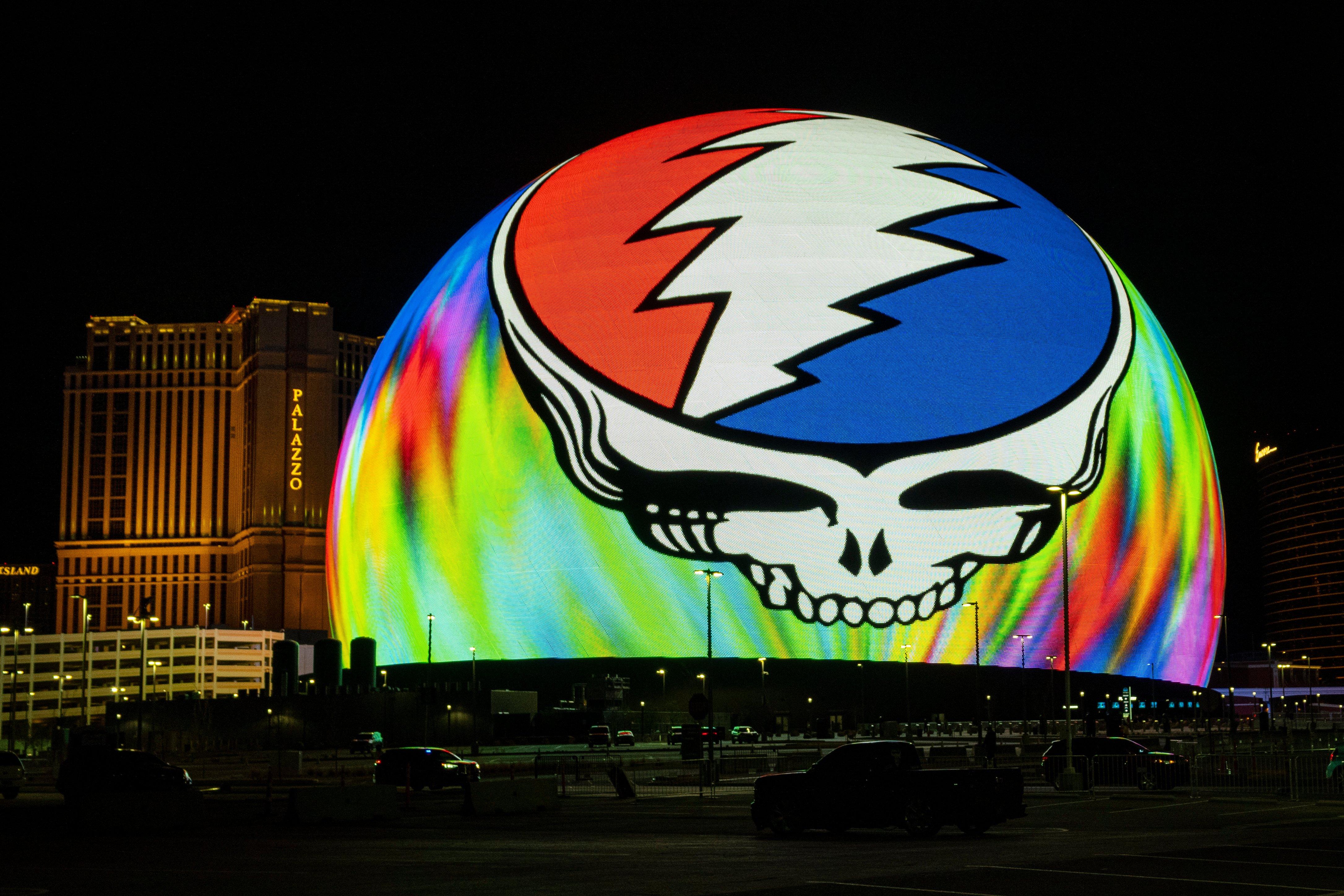
Photo: Kevin Carter
list
Why Dead & Company's Sphere Residency Is The Ultimate Trip
The 30-date Las Vegas residency is an unprecedented look at Dead & Co's live artistry. With stunning visuals and immersive technology, the Dead Forever residency takes attendees on an unpredictable, eye-popping vortex journey.
The scene on Saturday, July 13, was one mostly familiar to Dead & Company fans: Usual suspects Jeff Chimenti on keys, Oteil Burbridge on bass, Mickey Hart on drums, and John Mayer on guitar, a Silver Sky in hand. Grateful Dead co-founder Bob Weir dutifully approached the microphone to deliver one of the Dead’s best-known opening lyrics: "You tell me this town ain’t got no heart."
Throughout the evening, appreciative cheers and whistles sounded at the first notes of a classic, like this one, intermingling with the hints of marijuana in the air. The crowd of thousands, who’d traveled from both near and far for the occasion, swayed to the music. Largely clad in the tie-dye t-shirts customary to the Dead fandom, they comprised a vivid sea of color, visible even in the venue’s dimmest lighting.
Bathed in the glow of a key anomaly — a 160,000-square-foot curved LED canvas — a Deadhead sitting in the row ahead of me turns around and asks if I’m enjoying the show (I am). When I return the question, he is emphatic, his response succinct: "it’s transformative."
He’s not wrong in that the audiovisual spectacle — which wrapped its eighth of 10 weeks this past weekend — metamorphoses Dead & Company’s concert format. Since it debuted in May, the now 30-date Las Vegas residency, dubbed Dead Forever, has attracted old-school and new-generation Deadheads, as well as curious first-timers. From one-of-a-kind production tools, like its 16K LED display (the highest-resolution display in the world, per developers) and stereographic projection, Sphere has empowered Dead & Company to carry forth the legacy of one of the most fervently-loved bands in American music history, with unprecedented storytelling capacities and complete creative control.
Read on for four reasons why Dead & Company’s residency at Las Vegas’ most-talked-about venue is the rock outfit like they’ve never been seen before.
The Meeting Of Music & Visuals Allows For True Narration
For the nearly four hours that Dead & Company play each Thursday, Friday, and Saturday of a residency week, the domed venue adjacent to the Venetian transforms from Sphere to spaceship. Narratively, the show is stylized as a long, strange trip through space that issues nods to the Grateful Dead’s history.
It’s only fitting that this story begins in San Francisco, where the Dead’s townhouse in the heart of the Haight-Ashbury district becomes the focal point of the audiovisual journey’s intro. The 360-degree view of the Dead’s residence and the larger row of townhouses to which it belongs pans to a drone shot of the Bay Area at golden hour and soon thereafter, outer space.
Visually, attendees travel through time and space in an unpredictable, eye-popping vortex of fantasticality (and sometimes, reality). Take, for example, the segment that recreates the Dead’s performance at the Great Pyramid in Giza, Egypt. The scene is punctuated by black bats that flap swiftly through the desert landscape — a detail that comes as a surprise to those in the audience, and one ultimately added based on Weir’s recollection of this very phenomenon during the 1978 event, Mayer tells GQ.
Before Dead & Company bring Dead Forever full-circle by returning to 710 Ashbury Street at the show’s close, the show winds through a colorful, circuitous run of visuals: the Dead’s iconic technicolor dancing bears, Cornell University’s Barton Hall, and a wall made entirely of digital reproductions of Dead event posters and hard tickets. The show’s depth of reference is plunging, and Sphere’s technology allows the story to play like an abstract movie that blurs timelines, affording Dead & Company an unusual and nonpareil opportunity to leverage live storytelling in a way they’ve never before been able to.
While Dead Forever is accessible purely as a visual marvel, for the initiated, it is rife with Easter eggs. Its historical allusions are familiar touch points for the Deadheads who hopped on the metaphorical bandwagon back when Jerry Garcia was at its helm. Although some of its segments will evade those less fluent in the Dead’s storied past, they can nevertheless serve as educational gateways to it (and to greater, deeper fandom) for those who leave the show wanting to learn more.
Read more: A Beginner’s Guide To The Grateful Dead: 5 Ways To Get Into The Legendary Jam Band
In A Way, Everything Is New
Whether one has seen Dead & Company once, five times, 20 times, or never before matters not, for Dead Forever is a brand-new show. Familiarity with the Grateful Dead’s legacy and its contemporary offshoot's genesis certainly enriches the overall experience, but it’s not a requisite to enjoy the show, making the residency a particularly good entry point for the Dead & Company-curious who may have missed them on The Final Tour in 2023.
Dead Forever levels the playing field for attendees in that, apart from the songs on the setlist, the residency represents net-new material. The marriage of music and visuals makes each of the 18 tunes new from the standpoint of an audiovisual experience, and the novelty of Dead Forever deepens for even the most experienced Deadhead.
"When I was growing up, ‘Drums’ was always my bathroom song, but now you don’t want to miss it," an attendee tells GRAMMY.com at the end of the first set (Dead & Company play one six- or seven-song set and take a 30-minute intermission before beginning the evening’s second and final set).
A customary part of the Dead’s sets, "Drums/Space" is an extended percussion segment that takes on new life in Dead Forever. Led by Mickey Hart, the set two standout is where sound evolves into physical feeling. As this portion of the show starts, the curved LED canvas swirls with images of different drums that move wildly as Hart and Jay Lane (who stands in for Grateful Dead co-founding member, Bill Kreutzmann) diligently drum, steadily increasing the pace and intensity with which they do so. The instruments that grace Sphere’s screen are Hart’s own, the drummer tells Variety. Following 3D-photographing that enables them to be displayed in this fashion, an ensemble of at least 10 different drums joins the visual jamboree.
The cinematic, multisensory nature of this segment grows increasingly climactic, with the percussion becoming so thunderous it becomes physical. No surprise, considering Sphere’s immersive, crystal-clear sound system, or the fact that 10,000 of the venue’s 17,385 seats are haptic seats that can vibrate in time with the mounting percussion. This technology transforms "Drums/Space" and allows a customary piece of the Dead’s traditional sets to be heard, seen, and felt anew.
The Environment Is Unusually Immersive —And Intimate
Upon mention of Sphere’s size — the globe measures 875,000 square feet and can accommodate up to 20,000 people — "intimate" is not the first word to come to mind. Still, the venue felt remarkably intimate during Dead & Company’s final performance of July.
This was owed in equal parts to its self-contained design and its immersive visual environment, in which Sphere’s LED screen wraps over and behind the audience. However uncannily, the latter contributes to a sense of closeness, creating the illusion that Sphere, its visual displays, and its audience are situated much more closely than they actually are.
Its 580,000-square-feet of LEDs, coupled with its 360-degree shape and structure, render Sphere the most immersive live music venue in the world. To that end, it’s not hyperbolic or unreasonable to call Dead Forever Dead & Company’s most immersive live venture yet.
Of course, the Dead Forever narrative — a trip through space undertaken together, as one community — only adds to the show’s combined sense of intimacy and immersion.
No Show Is The Same
It’s not out of character for Dead & Company to play no repeats across consecutive evenings (as they did at San Francisco’s Oracle Park, where they laid their touring career to rest last July), and Dead Forever is no exception. Apart from "Drums/Space" — the sole item on the setlist that recurs each night — the 17 other songs that the band will play and their visual accompaniments are left to Dead & Company’s whim.
"What’s become really interesting — and I would say it’s a challenge, but it’s a really fun one — is that not only do you have to make the songs work in some kind of a flow for the setlist, but every piece of content has maybe eight or 10 songs that can go with it," Mayer told Variety.
No show is the same, yielding similar but unique viewing experiences across a given residency weekend and, more broadly, the portfolio of Dead Forever shows performed to date. This aspect has enticed avid fans to return not once, not twice, but three times in a given weekend, to see a fuller scope of what Dead Forever has to offer across its many possible variations.
With the residency’s July run now in the rearview, Dead & Company will take a brief break before returning to Sphere Aug. 1-3 and 8-10 for the final Dead Forever trips — for now.
Explore The World Of Rock
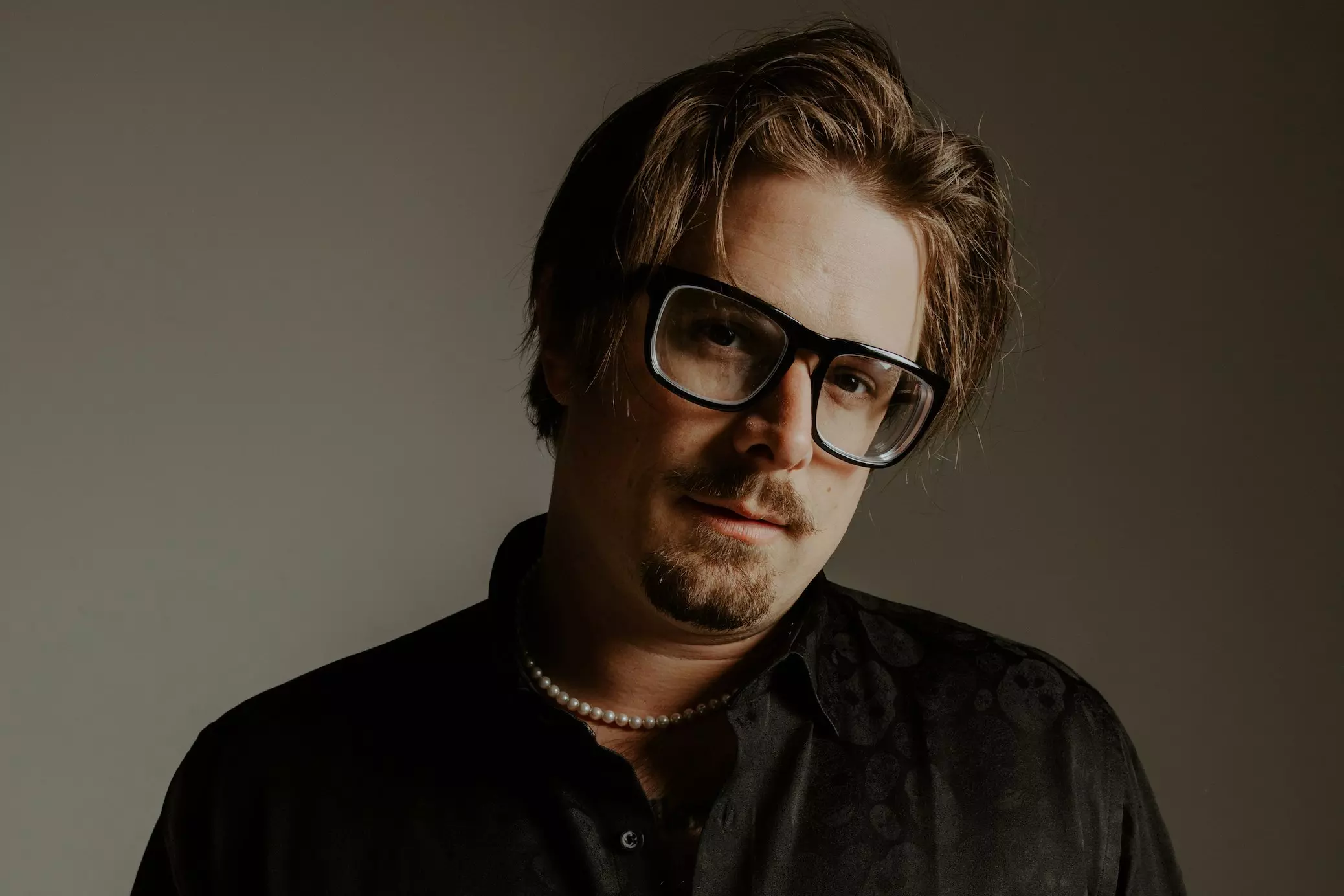
HARDY On New Album 'Quit!!' & How "Trying To Push My Own Boundaries" Has Paid Off
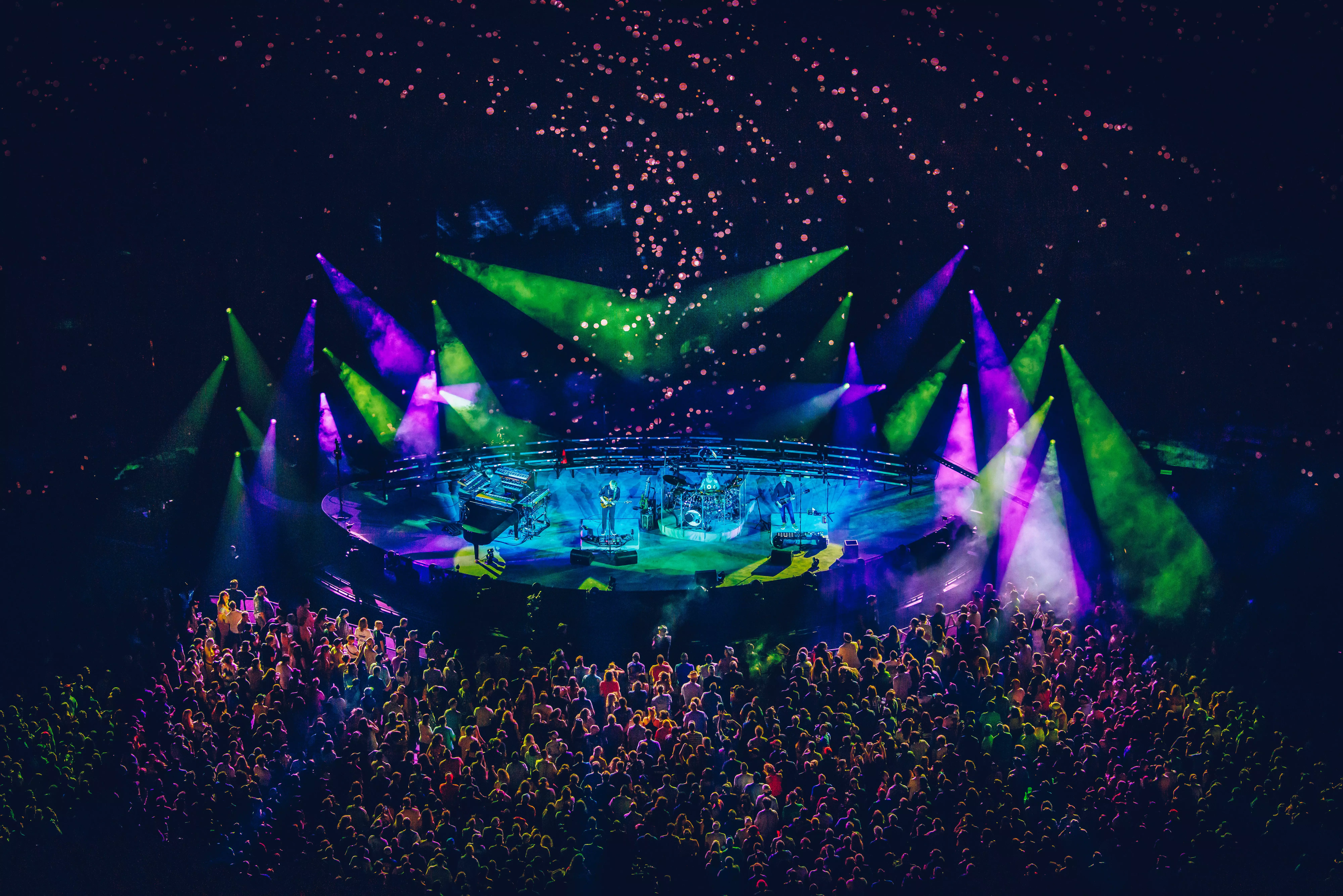
A Beginner’s Guide To Phish: 8 Ways To Get Into The Popular Jam Band
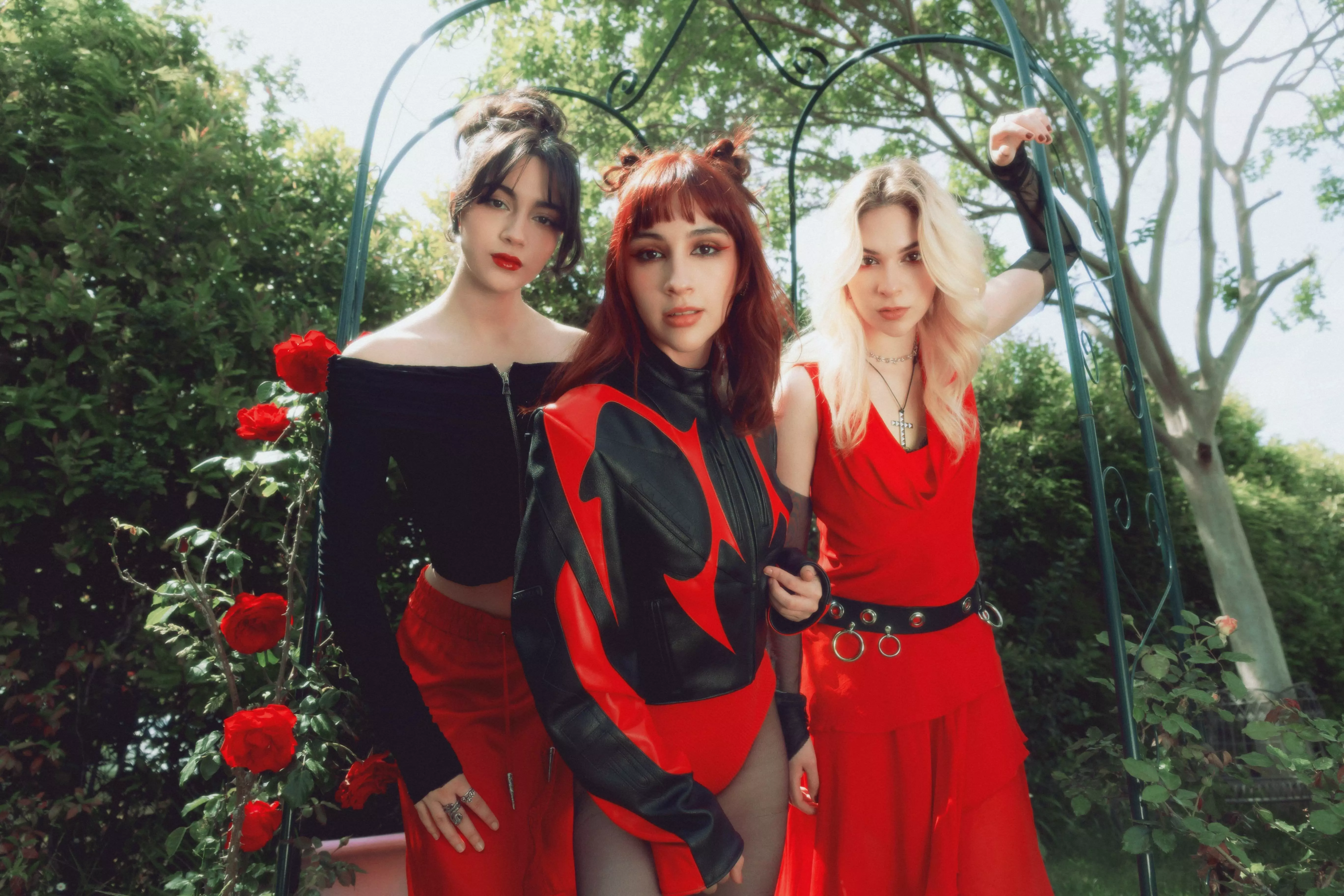
Mexican Rockers The Warning On 'Keep Me Fed' & "The Possibility That We Could Literally Do Everything"

Watch Red Hot Chili Peppers Win Best Rock Album
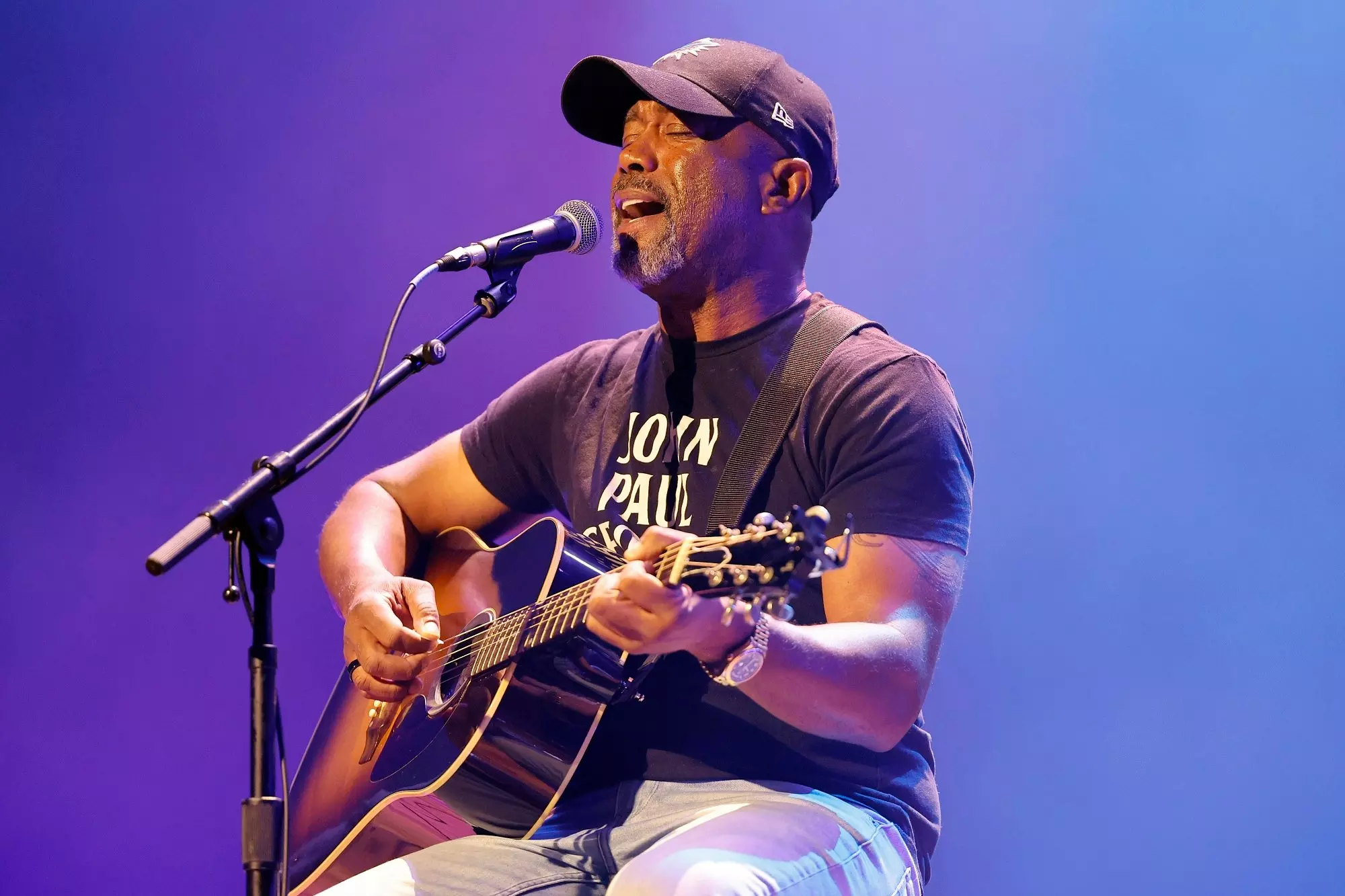
Darius Rucker Shares Stories Behind 'Cracked Rear View' Hits & Why He's Still Reveling In "A Dream Come True"

Photo: Dana Trippe
interview
Finding 'Comfort In Chaos': John Summit On The Journey To His Debut Album
"I always wanted to do an album," the DJ/producer says of 'Comfort in Chaos.' Although Summit has graced many major stages, creating his full-length debut took "over 10 years of producing and eight years of releasing music to get confident enough."
"I'm a little hungover, but I'm hanging in there," John Summit admits with a chuckle. The DJ/producer had stayed out late the night before (as DJs typically do) but for once, it wasn’t for work. Instead, he and his friends went bar- and club-hopping — "normal people stuff," Summit calls it. When asked how often he gets to do that these days, he laughs again. "Literally never. I felt like it was the first time in years."
Given the past few years, it’s understandable. Summit was still early in his career when he released his breakout hit, 2020’s "Deep End," a couple months into global lockdown. He maintained that momentum with a long string of releases including "Thin Line" with Guz, "Sun Came Up" with Sofi Tukker and "Human," the latter producing his first U.S. Dance Radio No. 1.
When live events powered back up, Summit quickly graduated to playing major venues and main stages. In the last two years, he’s DJed everywhere from Movement Detroit to Manchester, Turin to Tulum, and NYC to nearly every Ibiza superclub; in between, he launched his Experts Only record label. This year, Summit closed out EDC Las Vegas and Coachella; in June, he headlined a show at Madison Square Garden. Being a dance music superstar is a marathonic job, but a glance at his off-the-cuff social media posts suggests he’s more than up for the challenge.
Despite his hectic schedule, Summit somehow carved out time to write his debut album, Comfort in Chaos. In a way, it showcases his past, present and possible future. Recent single "EAT THE BASS" delivers the booming energy of the club tracks upon which he made his name; others, such as Billboard Top 10 hits "Where You Are" and "Shiver" with Hayla, are examples of his current evolution into lyric-focused songs, equally rich in melody and emotion. There are more surprises, still, as Summit explores sounds beyond his house and techno playground. "[This is] exactly the kind of music I've always wanted to make," he says, "but I never had an outlet or a reason to because they're not dance-floor-focused tracks."
The album’s sonic extremes also represent the duality between John Summit, the artist we see living his best life, one party at a time; and John Schuster (his given name), who’s introspective, who isn’t always confident, and who’s experienced "the lows" of returning from a show to an empty hotel room. "Now I'm comfortable where I am in life and I feel like I can tap into that [emotion]," he says. "It's cool to be able to show that side of me."
Before Comfort in Chaos’ release on July 12 via Darkroom/Experts Only, Summit tells GRAMMY.com how he got to this milestone.
This interview has been edited for clarity.
How long has the idea of a debut album been in your mind?
It's been in my mind since the day I started making music. I really got into songwriting four years ago. I did "Summertime Chi" with Lee Foss, which is an original written vocal, and then I did "What A Life" with Stevie Appleton a year later. That was received really well by my fans and I'm like, Oh, I don't have to just use samples. I can actually write completely original music.
Ever since then, the music has gone crazy. The first single off the album that I made was "Where You Are" with Hayla, which came out over a year ago, and that's when I feel like the ball really started rolling. In November, I took a month off and wrote pretty much the whole album in London and it really all came together then.
An entire month off? That seems rare.
Yeah, it's insane for me. I haven't taken a month off since I started touring, but I knew I had to do that, especially to make music that's not just meant for the dance floor. I produce on the go. I produce on planes and everything, but when you're always playing shows, you always make music just for the shows.
When you can actually take time off, I feel like you can make music that's actually meant for those rainy London days meant for just chilling with friends and stuff like that. So it was cool to make an actual body of work instead of just festival music.
What did that month look like for you in terms of the creative process?
I got this studio house for a month; this crazy house that has a couple of studios in it. My bedroom's at the top and I would take a slide down to my studio literally from the bedroom. I had a session every day for 30 days straight, and I just invited all the singers and producers I worked with. Sub Focus for example, he lived in London and then Hayla, Julie Church, Paige Cavell.
Pretty much everyone I work with is UK-based, so it was kind of a no-brainer to go to London for that. It was a lot of fun because we just make music all day, then drink at night and party. That's when you can share all your ideas with other people, at night when you're having drinks, wanting to call it banter. It was great.
To speak more about the variety of music that you make: You initially broke out with very club-forward tracks like "Deep End." But as you said, you've since honed a more melodic, songwriting-based sound. Was it a conscious evolution or did it just gradually happen over time?
I feel like it was just an evolution as an artist. House music is a very loop-based sound where it's, what, a four-by-four kick drum and an eight-bar loop… I kind of graduated from that to doing full-written songs [like] "Where You Are." But it took a lot of time.
I was always writing songs during that process, but they weren't good. Writing a full song, it's like going from a short film to a movie. I always wanted to do an album, but it really did take me over 10 years of producing and eight years of releasing music to get confident enough to be able to do this.
How do you tap into the emotion of those songs, especially given the image that you portray online?
I guess that's the whole purpose of the album: That I've been portraying this John Summit image my whole career, but in reality I'm John Schuster. The John Summit image is obviously an entertaining party guy that loves to have a good time; in reality, outside of the club, I'm just sitting at home making music, and I want to show the more introspective side of me.
I've been neglecting my emotions the past few years, especially after quitting the accounting job five years ago. Then I was just in this full party mindset, but now I'm comfortable where I am in life and I feel like I can tap into that. So it's cool to be able to show that side of me.
Who is that more introspective John Schuster?
Someone that, I guess, shows that I'm not really a 100 percent confident all the time. That I've experienced very high highs, but very low lows as well. I mean, John Summit has the biggest highs on stage, but then I go back to my hotel room and I'm by myself and experiencing the lows and being by myself all the time. So I guess showing that kind of emotional side is fun for my music at least.
Absolutely. I imagine it’s difficult going not from zero to a hundred, but a hundred to zero.
Exactly. That's the hard part. Zero to a hundred is the fun part.
If debut albums are like an artist's mission statement, what do you want 'Comfort in Chaos' to say?
I think kind of what I was just touching on, the duality of John Schuster and John Summit. This is the first time I've fully shown my other half. I've been showing it through singles: "Where You Are," "Go Back," "Shiver" and stuff. But to do it in a full album where — especially the intro track where there's really no vocals on it, and it starts experimental and a bit progressive, and then the drop is really just a kick in bass. It's tension-release, which I love in music, but it just shows, not to be too pun intended, the comfort in the chaos that is my life right now.
What brings you comfort in chaos?
That's a good question. Honestly, it's more so me trying to find my comfort in chaos. Because the thing is that if I'm on stage every night, I’ve got to be comfortable up there. The more confident I am, the better show that I do. And so I think I'm finding it now.
It's kind of the whole fake it till you make it. At first I had to get hammered every single night just to get on stage, and now I can get up there without doing that, which is a big stepping stone for me.
So it seems like it's more about the journey than the destination.
Exactly, exactly. It's basically trying to find my comfort in chaos. And I think I've gotten there, so now is the perfect time for the album. I couldn't release that while I'm still not comfortable.
Given how significant Kaskade and deadmau5’s "I Remember" is to your electronic music journey, it must feel very special to have Kaskade on the album.
Yeah, it was kind of a no-brainer. I was able to remix "I Remember" last year, which is huge for me. The track that literally got me into electronic music. Kascade is also from Chicago, and he's the one that introduced me to Hayla, too.
We've been trying to make something work and we just didn't know what direction to go with it. It took a while, but we both love melodic and emotional music and we both love heavy techno, and so we made it work in one song, which is great because the track starts very comforting and it gets very chaotic, so it's very on-brand with the album.
What have you learned from Kaskade, whether directly or from afar?
I've learned patience, and that everything's going to be okay. I'm a very neurotic person; I am very anxious and worry about every little detail, and he's the coolest, calmest guy I've ever met. I think it has to do with just his experience in the scene. Everything I'm experiencing is something he's experienced at some point in his DJ career, and even before Coachella, I was like, "Man, I don't know if I can do this" And he was like, "Bro, you got this. It's easy. Play your music." And I'm like, "Oh s—, you're right." It’s as simple as that. Yeah, he's been a good mentor.
To borrow a word that you've used in another interview, being "unhinged" on social media has played a significant role in building your fan base over the years. How has your relationship with social media changed in terms of the content you share and fan interactions?
I'm still definitely unhinged on social media. That hasn't changed, but it has made me not afraid to show all facets of myself. I've just started showing the more emotional and deeper side of myself, but it is cool that I can say no matter who I am, I have good days and bad days. The fans can connect and resonate with that, which is cool because it was annoying growing up and following artists who are perfect on social media all the time. So I try to be as transparent as possible.
Given the positive response to your collaboration with Subfocus, do you feel more encouraged to get eclectic in your future music?
The Subfocus one was still pretty dance-floor-focused, and I still haven't released anything that's not dance-floor-focused. I mean, obviously in the album there is with the intro, with "Calm Down," with "Undo," with ["Palm of My Hands"] and ["Stay With Me"], so I'm waiting to see how fans like that. But at the end of the day, though, I’m at the point in my career where I don't have to put out things just to please dance floors. I feel like I've kind of made it where now I can experiment more and take risks. Now is when my career is starting to actually get fun.
Latest News & Exclusive Videos

2024 Paris Olympics Opening Ceremony: Watch Celine Dion, Lady Gaga, Gojira & More Perform

Ice Spice Is The Drill Queen On 'Y2K!': 5 Takeaways From Her Debut Album

New Music Friday: Listen To New Songs From Halsey, MGK And Jelly Roll, XG & More

Watch Young MC Win Best Rap Performance In 1990

The Red Clay Strays Offer A New Kind Of Religion With 'Made By These Moments'
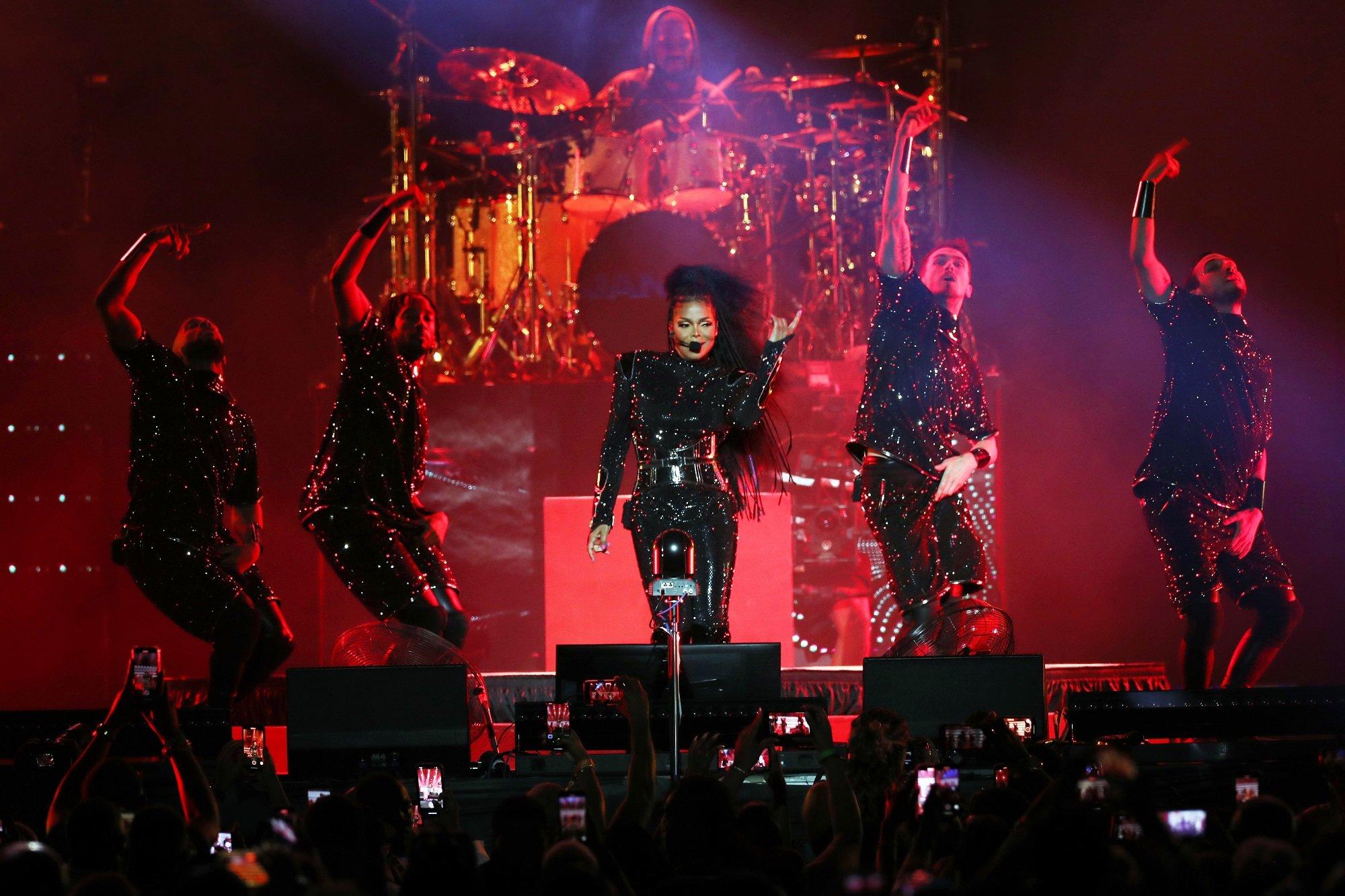
Photo Credit: Bennett Raglin/Getty Images for Essence
interview
Celebrating 30 Years Of Essence Fest: How New Orleans & Multi-Generational, Diasporic Talent Create The "Super Bowl Of Culture"
Ahead of the 30th Essence Festival Of Culture, held July 4-7 in New Orleans, GRAMMY.com spoke with executives and curators of the legendary celebration of Black excellence.
Every July, millions of Black people, specifically Black women, descend upon New Orleans for the Essence Festival of Culture (EFOC). Known for many years as the Essence Festival, the festival is a celebration of Black culture, community, and heritage. Since its inception in 1995 as a one-off event to commemorate the publication’s 25th anniversary, the festival has evolved into a diasporic jubilee, drawing in people of African descent from across the diaspora.
In addition to its global presence, the festival pours millions of dollars into the local New Orleans community, which has served as the festival's home for 30 years (with the exception of 2006, when the festival was held in Houston, because of Hurricane Katrina). In 2020, the festival was canceled because of the COVID-19 pandemic. Despite this, the annual festival continues to be one of the most sought-after and attended festivals in the United States.
This year’s Essence Festival of Culture will be held at the Superdome from July 4-7, replete with legendary and fast-rising talents. On July 5, Birdman & Friends will celebrate the 30th anniversary of Cash Money Records. The following day will feature a special performance by Charlie Wilson, while Usher will commemorate the 20th anniversary of Confessions.
Janet Jackson and Victoria Monét will headline the festival's final night, while Frankie Beverly and Maze close out the festival with the return of All-White Night. Other performers include The Roots featuring Mickey Guyton, Ari Lennox and T-Pain, Busta Rhymes, Raphael Saadiq, D-Nice featuring Shelia E, Big Boi, and many more.
Read more: Music Festivals 2024 Guide: Lineups & Dates For Lollapalooza, Coachella, Bonnaroo & Much More
EFOC has been compared to SXSW, Coachella, Austin City Limits, and other notable festivals, yet it stands out for its empowerment-centered approach. It is not simply a festival, it is a family reunion. The one festival in the United States that does not pander to or take advantage of Black audiences, but truly celebrates them and their achievements. Although music has always been an integral part of the festival’s ethos — Aretha Franklin and B.B. King performed at the first iteration — the festival excels in its multi-generational and interdisciplinary programming. On any given day, attendees can attend sessions on Black entrepreneurship, politics, mental health, and literature, as well as seminars focused on issues impacting the Black community.
There’s a reason why the festival is referred to as the party with a purpose. For decades, it has operated as a celebratory convening place for Black people, Black families, and Black communities. Now, more than ever, spaces like EFOC are needed, as the Black community experiences an onslaught of changes — from Historically Black Colleges and Universities in North Carolina and Tennessee being subject to intense government oversight, to Black women-owned venture capital firms being targeted by conservatives, and Black voting rights becoming at risk during an election year.
Ahead of the festival’s 30th celebration, Michael Barclay, Executive Vice President of Experiential for ESSENCE Ventures and Barkue Tubman Zawolo, Chief of Staff, Talent and Diasporic Engagement for Essence Ventures, spoke to the Recording Academy about the history, legacy, and future of the Essence Festival of Culture.
This interview has been edited for clarity.
Are you part of the generation that grew up with the Essence Festival of Culture? If so, how does it feel to be a part of it?
Barkue Tubman Zawolo: I'm originally from Liberia. And even being in Liberia, prior to my family moving to the U.S. in 1980, Essence was always a thing for my mom and my aunts. When we came here, fast forward to me, as an adult, [after] graduating college, I got into the music industry. I've managed artists that have gone through the Essence stages and pages in different ways.
Essence Fest has always been something that we were familiar with. I have to say, I had not really experienced Essence Fest until 2019 when Essence was actually a client. One of the things that I was doing [at that point] was integrating the Diaspora and African creatives within the festival in fashion and music.
To be in the role that I'm in right now and to be on a team with people who have been a part of Essence for a long time…. Essence seems to be ingrained in all of our fabric. [What] started as a music festival now is the Super Bowl of Culture that is the Essence Festival of Culture. To be on the team that helps bring this to life for our community is a daunting but rewarding task all in the same.
Essence is something that I don't think anybody in our community takes lightly. Even our partners understand the value of it. We certainly understand that we serve the Essence-inverse and, and we are in service to this community. It is a huge honor to be able to be a part of the team that brings this to life and, and, and constantly hear what it means to the community globally too.
One thing that I admired, especially about last year's festival, was GU Kickback — a music event hosted by Girls United, the publication’s Gen Z vertical. I saw a number of local artists from New Orleans, such as 504ICYGRL. ESSENCE just released a series of cover stories celebrating the 30 year relationship between the publication and New Orleans; how do you highlight the city and their history?
Michael Barclay: As somebody who's worked in experiential, creating gatherings and experiences for almost 25 years now, the venue is always important when you're trying to set the box where you are creating for your community, for your audience. New Orleans has been that backdrop for us for almost 30 years now.
New Orleans is the convergence of our mission, our brand, in a city that is perfectly matched for that energy. New Orleans is as much a part of Essence Festival of Culture as Essence Magazine is to Essence Festival.
It is very much a partnership that has created this cultural movement. To be more inclusive, and highlight more of those local relationships and talent is very intentional. It has been something that we have put a lot of energy and effort into over the last couple of years.
This will be my third festival this year. I think Barkue, you started maybe a year or two before me. We're a fairly new crew that is working to help grow and reshape and solidify those relationships. Even with how we handle the management of the festival.
Our VP of Essence Festival, Hakeem Holmes is a hometown boy from New Orleans. He's the pride and joy. They love to see him coming. He's always enlightening us on the things that we need to be focused on for the city and how we make the best partnership and make the best impact on the area.
It was intentional what you saw last year. It's intentional this year. We dedicated our entire festival edition of the magazine as a love letter to New Orleans. It's a symbiotic relationship that is one of the key reasons why this festival is the Super Bowl of Culture.
I would love to hear about the talent aspect of the festival. Last year, Megan Thee Stallion headlined. In previous years, Beyoncé and Prince have served as headliners. What is the formula between balancing local talent, national talent and diasporic talent at the festival?
Zawolo: As we grow the festival, the intentionality becomes even more and more important. And, what we do in understanding where we are as a brand.
We're 30 years into the festival, the brand is 55 years. What's traditionally known as the Essence Woman is now bringing her daughter. It's multi-generational. We also know that the world is as big as your cell phone, so people are now exposed to different types of content and music.
We see the influence of Afrobeats and Caribbean music. We are intentional about making sure that every night really speaks to multiple generations, but it's anchored in a generation. It's like, who's bringing, who to the concert on Friday? Is it the daughter bringing her mama?
It's anchored in that younger demo, but we're going to make sure that they're going to have a collective good time there. Saturday is usually our heaviest night. We have our living legends that show up there; that really cuts across generations. This is anybody can bring anybody, but let me tell you, you're going to be able to teach each other, connect with each other with the different groupings of talent that we have.
We try to make sure that there is something that speaks to us, but that that connects with the diaspora on as many nights as possible. Sometimes it's not because they're from a different country, but because we know the music also resonates.
If you think of Janet Jackson, you can go anywhere in the world. She can check off that box, although she's not from there. You can create those ties, but we also are intentional about having Ayra Starr and Machel Montano. Last year we had Tems and Wizkid. The goal is to continue to grow what that looks like, because we are a global brand and that is our diasporic and global intent in connecting the global Black community is really important.
We are intentionally multi-generational. We intentionally lead into where a multitude of generational communities can come together and have fun together. There is something for everybody. We have a unique opportunity with Essence as the brand grows to be able to not only speak to what they want to call the aunties, I call the punties. I also think that this is where we get to educate the next generation on where we're coming from. We also get to learn from them on where they are and where they want to go.
What a beautiful way to kind of tie all of these connections. Last year, the festival celebrated 50 years of hip-hop; this year you're celebrating the 30th anniversary of the festival. What is the intention behind this year’s music programming?
Zawolo: Paying homage to people who had done some historical things on our stages. We have Janet [Jackson] back. People are like, “Oh, we saw Janet two years ago,” but Janet is also one of the highest sellers in the festival's history.
If we're going to celebrate, let's celebrate, because we know Janet never disappoints. We also want to lean into some of the [older] talent, like Charlie Wilson, Uncle Charlie. He's graced that stage so many times, but yet it's still very relevant. Using this moment to reignite things that we've done in the past and bring them back to life that we know the audience missed.
Frankie Beverly, who is going to come, this is probably going to really be his last performance. The passing of the torch. This year was about having to be intentional about what other milestones are happening that are important to this culture. Cash Money is also celebrating 30 years. Who better, right?
Essence has been in New Orleans for 30 years. Cash Money and crew are from New Orleans. Juvenile just got the key to the city from the mayor. We want to honor and celebrate him, but we also want to recognize the influence that this group of very creative, entrepreneurial, rappers and artists have had on culture, because there was a time where we all were backing that ass up.
Making sure we highlighted milestones, connecting with people who have historically been a part of making history with us, introducing some new ones — that's what we have to do. We have to set up now for the next 30 years. We want to go to the soul of what appeals to our audience, and we're really all about good music.
I think the 30th year just continues to do what we do. As we look to grow and connect demos, Megan Thee Stallion is a very viable option because again, the daughter now is going to bring the mama. Intergenerational diasporic and connecting demos, I think that only happens at the Superdome. That's also happening in the convention center, which I believe is honestly the soul of the festival.
What are your hopes and aspirations for the next 30 years of the Essence Festival of Culture? Will Essence Fest always be in New Orleans? Are we going to have an Essence Fest in Lagos, Nigeria?
Barclay: Being on this side of [EFOC], seeing the true impact of the festival and how it impacts the communities, how it impacts the folks that come to New Orleans, and now, because we've expanded to our virtual audience, the 1.7 million that are viewing around the world, my hope for the festival is that we continue to show up where our community needs us.
We're going to be in New Orleans. We're going to be in our official world as we call it. If you can't make it to New Orleans, you can tune into Essence.com and you can see what's going on there. We are creating virtual experiences, AR experiences, VR experiences, all those things, so really keeping up with the way that people continue to connect with each other, whether they're physically in the same place or halfway across the world.
I think that type of innovation is what I want to continue to see us do and allow us to create that joy that we generate in New Orleans and wherever it's needed for our community.
PRIDE & Black Music Month: Celebrating LGBTQIA+ & Black Voices
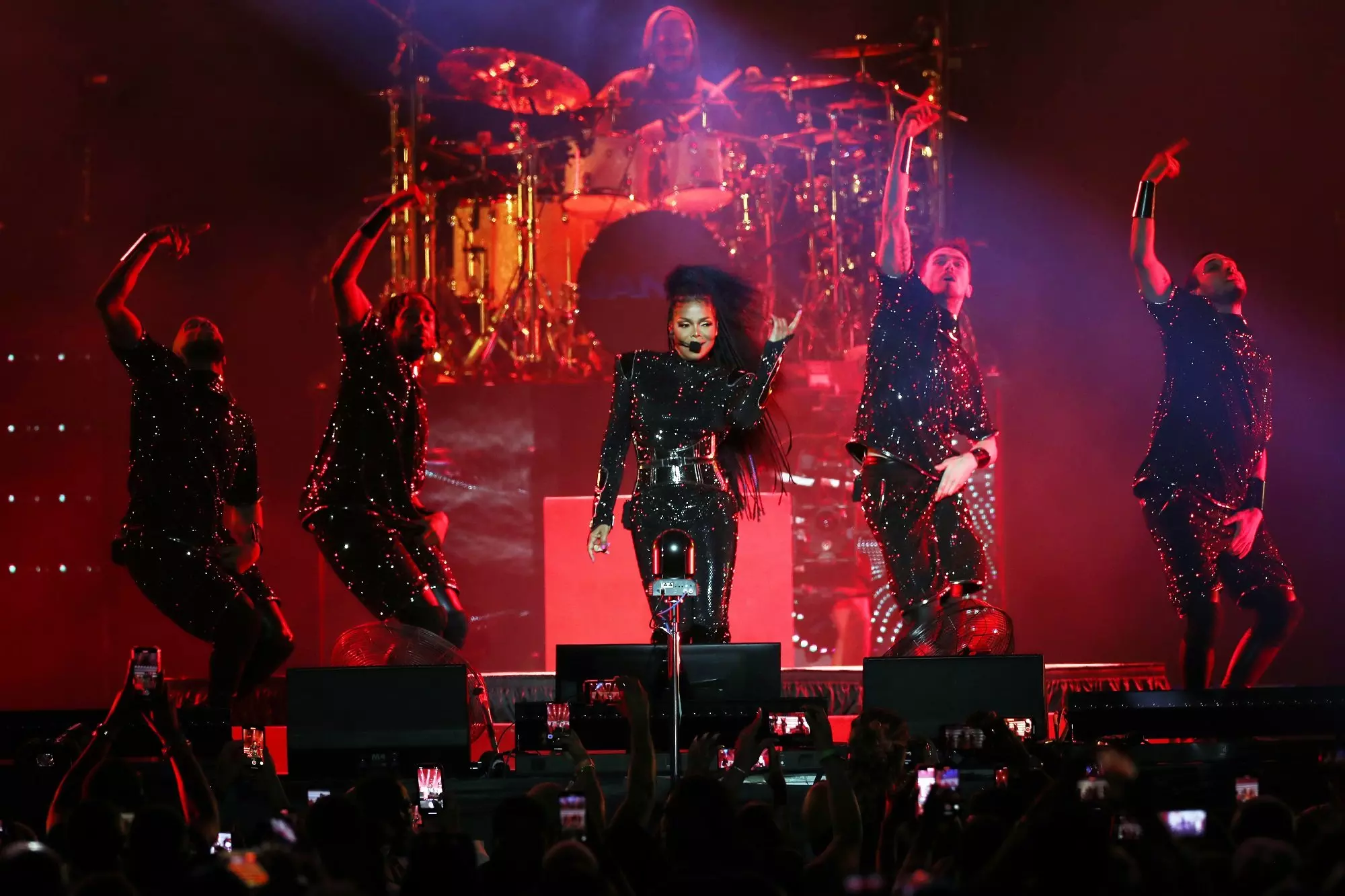
Celebrating 30 Years Of Essence Fest: How New Orleans & Multi-Generational, Diasporic Talent Create The "Super Bowl Of Culture"
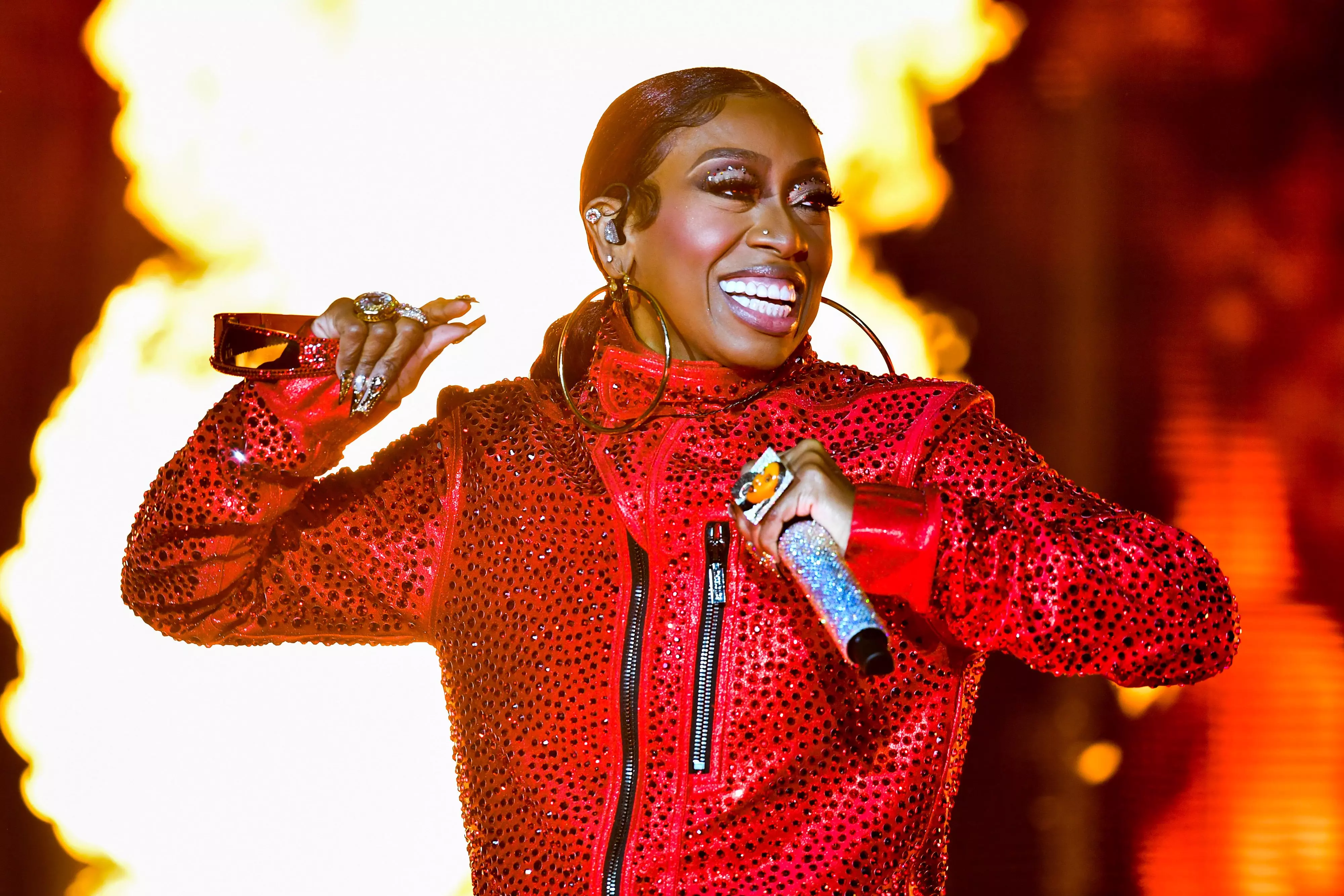
Celebrating Missy Elliott: How The Icon Changed The Sound, Look & Language Of Hip-Hop

Tekno Talks New Music, Touring America & His "Elden Ring" Obsession
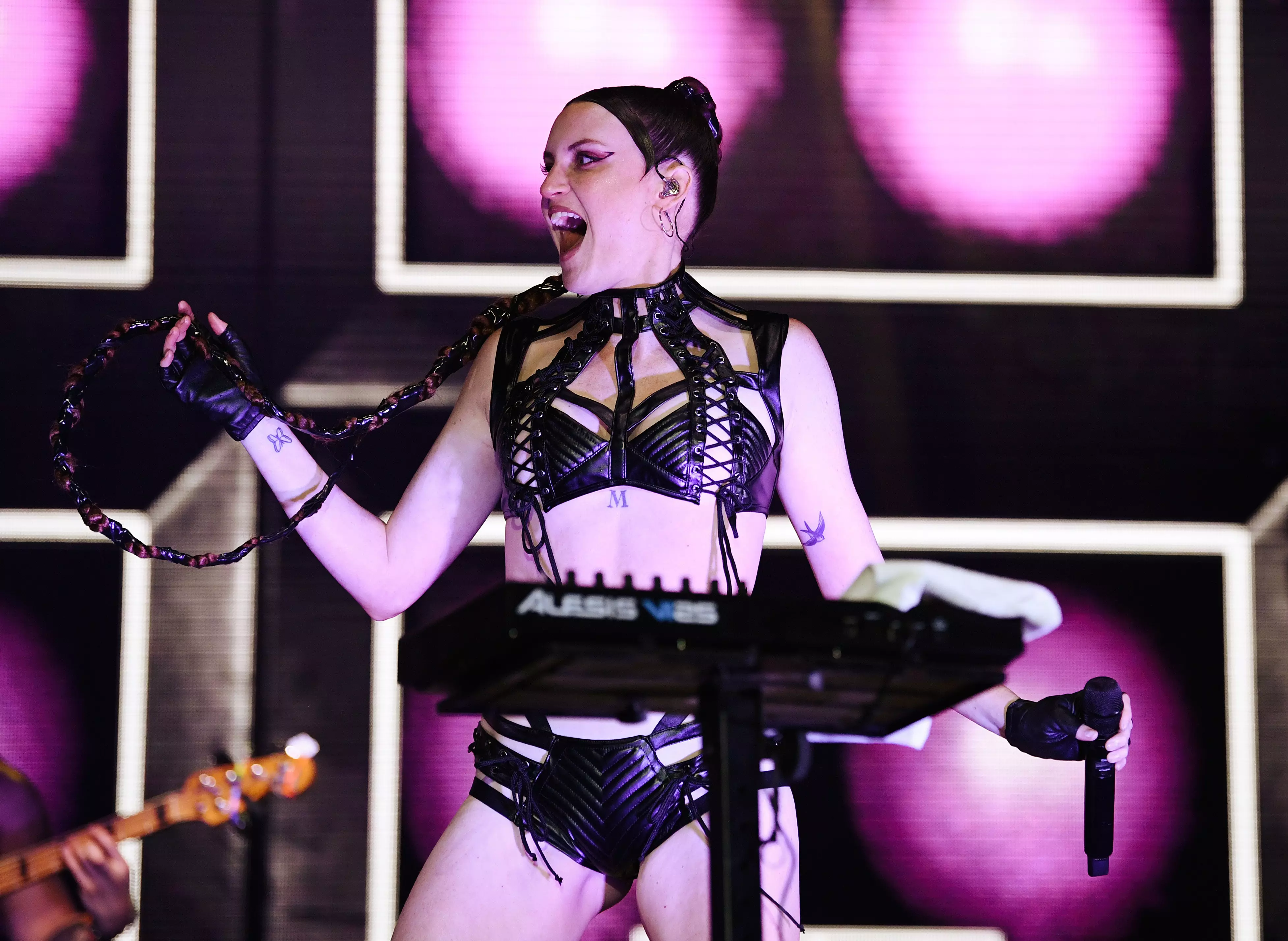
5 LGBTQIA+ Record Labels To Check Out: Get Better Records, So Fierce! And Others
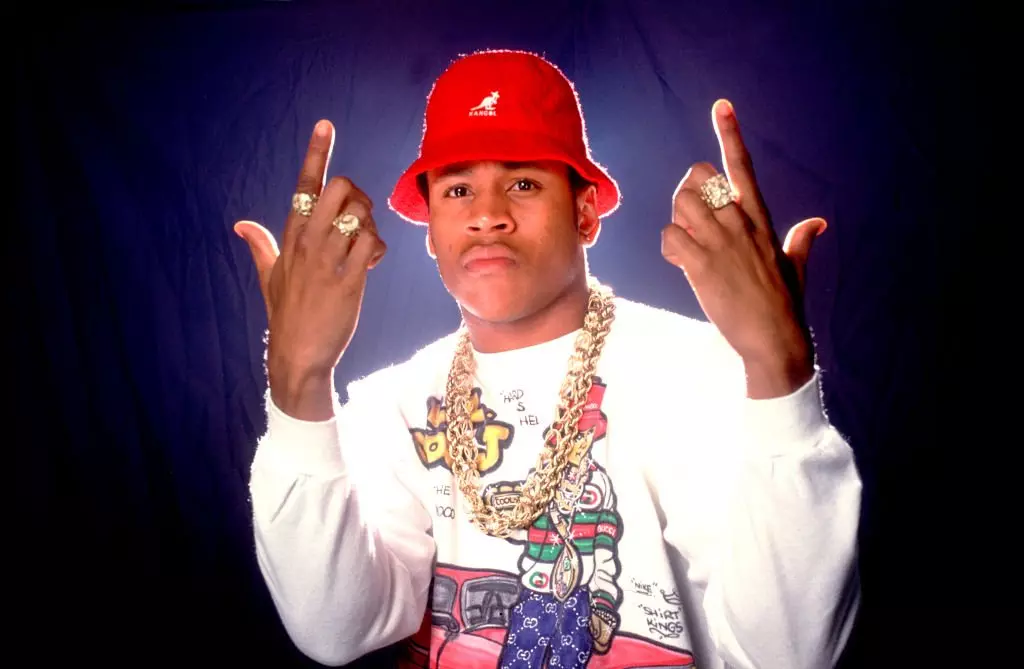
Celebrate 40 Years Of Def Jam With 15 Albums That Show Its Influence & Legacy
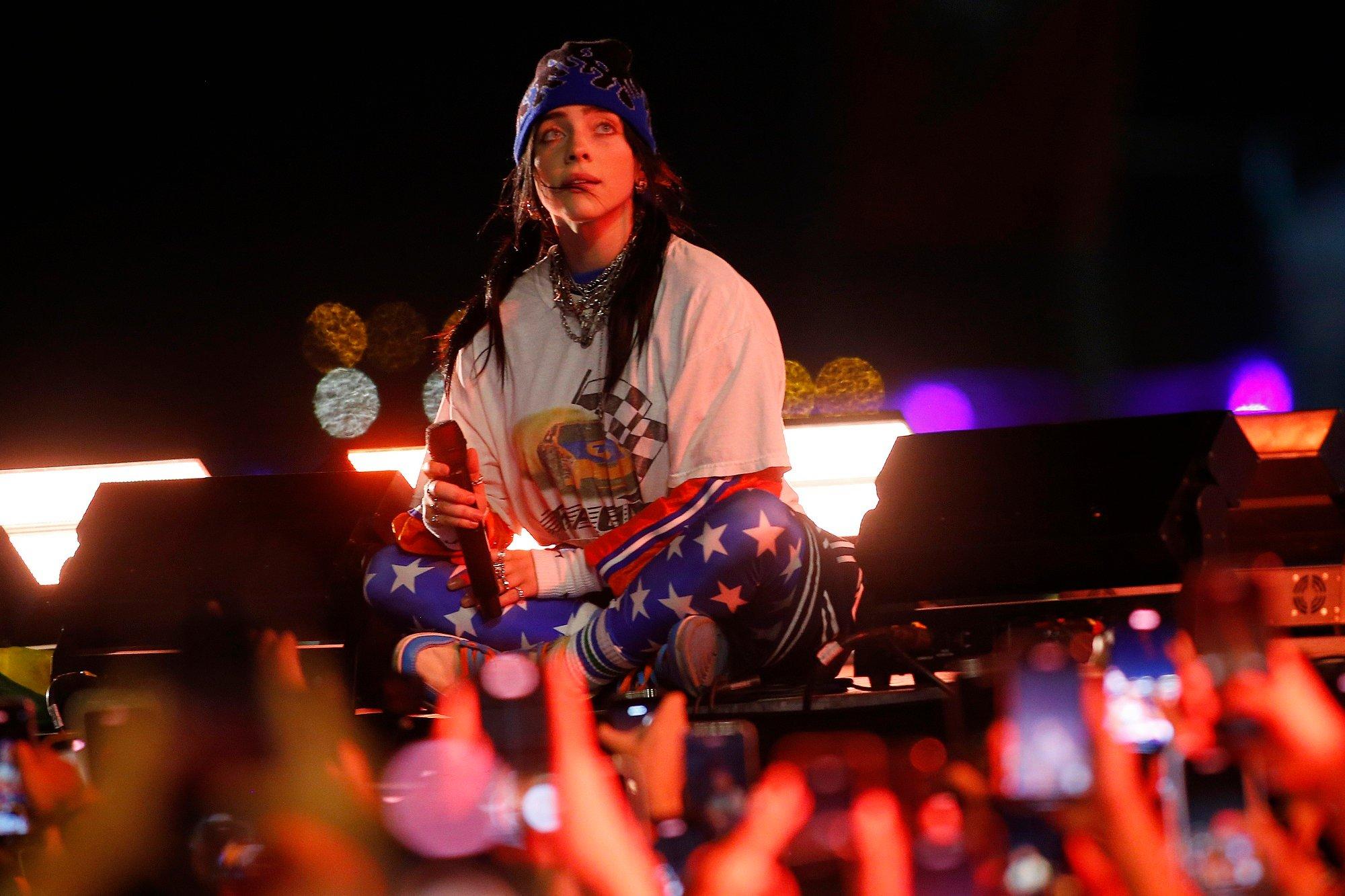
Photo: Marcelo Hernandez/Getty Images
feature
The Environmental Impact Of Touring: How Scientists, Musicians & Nonprofits Are Trying To Shrink Concerts' Carbon Footprint
"It’s not just [about] a single tour, it’s every tour," singer Brittany Howard says of efforts to make concerts more sustainable. From the nonprofit that partnered with Billie Eilish, to an MIT initiative, the music industry aims to curb climate change.
Beloved by fans around the globe, yet increasingly unaffordable for many artists, concert tours are central to the world of entertainment and local economies. After the pandemic-era global shuttering of concert venues large and small, tours are back, and bigger than ever.
Taylor Swift’s Eras Tour is smashing records, selling more than four million tickets and earning more than $1 billion. But that tour made headlines for another reason: as reported in Business Insider and other outlets, for a six-month period in 2023, Swift’s two jets spent a combined 166 hours in the air between concerts, shuttling at most a total of 28 passengers.
Against that backdrop, heightened concerns about the global environmental cost of concert touring have led a number of prominent artists to launch initiatives. Those efforts seek both to mitigate the negative effects of touring and communicate messages about sustainability to concertgoers.
A 2023 study sponsored by Texas-based electricity provider Payless Power found that the carbon footprint of many touring bands was massive. In 2022, concert tours in five genres — country, classic rock, hip-hop/rap, metal and pop — were responsible for CO2 emissions totaling nearly 45,000 metric tons. A so-called greenhouse gas, carbon dioxide contributes to climate change by radiative forcing; increased levels of CO2 also contribute to health problems.
No serious discussion of climate issues suggests a worldwide halt to live music touring, but there exists much room for improvement. Both on their own and with the help of dedicated nonprofit organizations, many artists are taking positive steps toward mitigating the deleterious effects that touring exerts upon the environment.
Smart tour planning is one way to lessen an artist’s carbon footprint. Ed Sheeran’s 2022 European run minimized flights between concert venues, making that leg of his tour the year's most environmentally efficient. Total carbon dioxide emissions (from flights and driving) on Sheeran’s tour came to less than 150 metric tons. In contrast, Dua Lipa’s tour during the same period generated 12 times as much — more than 1800 metric tons — of CO2.
In July, singer/songwriter and four-time GRAMMY nominee Jewel will embark on her first major tour in several years, alongside GRAMMY winner Melissa Etheridge. During the planning stage for the 28-city tour, Jewel suggested an idea that could reduce the tour’s carbon footprint.
"I always thought it was so silly and so wasteful — and so carbon footprint-negative — to have separate trucks, separate lighting, separate crews, separate hotel rooms, separate costs," Jewel says. She pitched the idea of sharing a backing band with Etheridge. "I’ve been trying to do this for 25 years," Jewel says with a laugh. "Melissa is the first person who took me up on it!"
The changes will not only reduce the tour’s carbon footprint, but they’ll also lessen the cost of taking the shows on the road. Acknowledging that there are many opportunities to meet the challenges of touring’s negative impact upon the environment, Jewel emphasizes that “you have to find [solutions] that work for you.”
Sheeran and Jewel aren’t the only popular artists trying to make a difference. A number of high profile artists have become actively involved in creating the momentum for positive change. Those artists believe that their work on sustainability issues goes hand in hand with their role as public figures. Their efforts take two primary forms: making changes themselves, andadvocating for action among their fans.
The Climate Machine
Norhan Bayomi is an Egypt-born environmental scientist at Massachusetts Institute of Technology and a key member of the Environmental Solutions Initiative, a program launched to address sustainable climate action. She’s also a recording artist in the trance genre, working under the name Nourey.
The ESI collaborates with industry heavyweights Live Nation, Warner Music Group and others as well with touring/recording acts like Coldplay to examine the carbon footprint of the music industry. A key component of the ESI is the Climate Machine, a collaborative research group that seeks to help the live music industry reduce carbon emissions. "As a research institution, we bring technologies and analytics to understand, in the best way possible, the actual impact of the music industry upon climate change," says John Fernández, Director of the ESI.
"I’m very interested in exploring ways that we can bridge between environmental science, climate change and music fans," Bayomi says. She explains that the tools at the ESI’s disposal include "virtual reality, augmented reality and generative AI," media forms that can communicate messages to music fans and concertgoers. Fernández says that those endeavors are aimed at "enlisting, enabling and inspiring people to get engaged in climate change."
The Environmental Solutions Initiative cites Coldplay as a high-profile success. The band and its management issued an "Emissions Update" document in June 2024, outlining its success at achieving their goal of reducing direct carbon emissions from show production, freight, band and crew travel. The established target was a 50 percent cut in emissions compared to Coldplay’s previous tour; the final result was a 59 percent reduction between their 2022-23 tour and 2016-17 tour.
A significant part of that reduction came as a result of a renewable-energy based battery system that powers audio and lights. The emissions data in the update was reviewed and independently validated by MIT’s Fernández.
Change Is Reverberating
Guitarist Adam Gardner is a founding member of Massachusetts-based indie rockers Guster, but he's more than just a singer in a rock band. Gardner is also the co-founder of REVERB, one of the organizations at the forefront of developing and implementing climate-focused sustainability initiatives.
Founded in 2004 by Gardner and his wife, environmental activist Lauren Sullivan, REVERB began with a goal of making touring more sustainable; over the years its focus has expanded to promote industry-wide changes. Today, the organization promotes sustainability throughout the industry in partnership with music artists, concert venues and festivals.
REVERB initiatives have included efforts to eliminate single-use plastics at the California Roots Music & Arts Festival, clean energy projects in cooperation with Willie Nelson and Billie Eilish, and efforts with other major artists. Gardner has seen sustainability efforts grow over two decades
"It’s really amazing to see the [change] with artists, with venues, with fans," Gardner says. "Today, people are not just giving lip service to sustainable efforts; they really want to do things that are real and measurable."
The Music Decarbonization Project is one tangible example of REVERB’s successes. "Diesel power is one of the dirtiest sources of power," Gardner explains. "And it’s an industry standard to power festival stages with diesel generators." Working with Willie Nelson, the organization helped switch the power sources at his annual Luck Reunion to clean energy. At last year’s festival, Nelson’s headlining stage drew 100 percent of its power from solar-powered batteries. "We set up a temporary solar farm," Gardner says, "and the main stage didn’t have to use any diesel power."
Billie Eilish was another early supporter of the initiative. "She helped us launch the program," Gardner says. Eilish’s set at Lollapallooza 2023 drew power from solar batteries, too.
With such high-profile successes as a backdrop, Gardner believes that REVERB is poised to do even more to foster sustainable concerts and touring. "Our role now," he says, "isn’t just, ‘Hey, think about this stuff.’ It’s more how do we push farther, faster?"
Adam Gardner believes that musicians are uniquely positioned to help make a difference where issues of sustainability are concerned. "When you’re a musician, you’re connecting with fans heart-to-heart. That’s what moves people. And that’s where the good stuff happens."
Small-scale, individual changes can make a difference — especially when they’re coordinated and amplified among other concertgoers. Gardner provides real-world examples. "Instead of buying a plastic bottle, I brought my reusable and filled it up. Maybe I carpooled to the show." Conceding that such steps might seem like drops of water in a giant pool, he emphasizes the power of scale. "When you actually multiply [those things for] just one summer tour, it adds up," he says. "And it reminds people, ‘You’re not alone in this; you’re part of a community that’s taking action."
Gardner understands that REVERB’s arguments have to be framed the right way to reach concertgoers. "Look," he admits, "It’s a concert. We’re not here to be a buzzkill. Our [aim] now is making sure people don’t lose hope." He says that REVERB and its partners seek to demonstrate that, with collective action and cultural change, there is reason for optimism.
"There’s a wonderful feedback loop between hope and action," Gardner says with a smile. "You can’t really have one without the other."
Sustainable Partnerships
Tanner Watt is Director of Partnerships at REVERB; he works directly with touring artists to develop, coordinate and implement initiatives that bring together his organization’s objectives and the specific personal concerns of the artists. "I get to come up with all the fun, big ideas," he says with a wide smile.
Watt acknowledges that like every concertgoer, each touring artist has a certain level of responsibility where sustainability is concerned. "And everyone can be doing something," he says, noting a number of straightforward actions that artists can put in place while on tour. "They can eliminate single-use waste. They can donate hotel toiletries that [would otherwise] hit the landfill."
Watt stresses that artists can lead by example. "Nobody wants to listen to an artist telling them what to do if they’re not doing it themselves," he says. "But we believe that everybody cares about something." He suggests that if an artist has cultivated a following, "Why not use [that platform] to be that change you want to see in the world?"
Each artist has his or her own specific areas of concern, but Watt says that there’s a base level of "greening" that takes place on every REVERB-affiliated tour. Where things go from there is up to the artist, in coordination with REVERB. Watt mentions Billie Eilish and her tour’s sustainability commitment. "The Venn diagram of food security, community health, access to healthy food, and the impact on the planet is a big cause for her," he says. "So there’s plant-based catering for her entire crew, across the entire tour."
Speaking to Billboard, Eilish's mother Maggie Baird said championing sustainability starts with artists. "If artists are interested, it does really start with them telling their teams that they care and that it’s foremost in their thoughts." In the same conversation, Eilish called the battle for sustainability "a never-ending f–king fight."
Watt acknowledges that with so many challenges, it’s important for a concerned artist to focus on the issues that move them the most, and where they can make the biggest difference. "Jack Johnson is a great example," he says. While Johnson is a vocal advocate for many environmental issues, on tour he focuses on two (in Watt’s words) "cause umbrellas": single-use plastics solutions and sustainable community food systems. Each show on the tour hosts tables representing local nonprofit organizations, presenting concertgoers with real-world, human-scale solutions to those specific challenges.
Four-time GRAMMY winner Brittany Howard is another passionate REVERB partner. "Knowing that I wanted to make my tours more sustainable was a start," she tells GRAMMY.com, "but working with REVERB really helped me bring it to life on the road. REVERB has helped us with guidelines and a green rider to keep our stage, greenrooms and buses more sustainable."
After listing several other specific ways that her tour supports sustainability, Howard notes, "By supporting these efforts, I am helping ensure future generations have access to clean water, fish, and all that I love about the outdoors." A dollar from every ticket sold to a Brittany Howard concert goes toward support of REVERB’s Music Decarbonization project. "I’m also excited to see industry-wide efforts that are reducing the carbon pollution of live music," Howard continues. "Because it’s not just [about] a single tour, it’s every tour."
There’s a popular aphorism: "You can’t manage what you can’t measure." From its start, REVERB has sought not only to promote change, but to measure its success. "As long as I’ve been at REVERB, we’ve issued impact reports," says Tanner Watt. "We include data points, and give the report to the artists so they understand what we’ve done together." He admits that some successes are more tangible than others, but that it’s helpful to focus on the ones that can be quantified. "We’re very excited that our artists share those with their fans."
Watt is clear-eyed at the challenges that remain. "Even the word ‘sustainable’ can be misleading," he concedes, suggesting that the only truly sustainable tour is the one that doesn’t happen. "But if folks don’t step it up and change the way we do business in every industry — not just ours — we’re going to get to a place where we’re forced to make sacrifices that aren’t painless." Getting that message across is REVERB’s aim. "We can’t stop the world," Watt says. "So we find ways to approach these things positively."
Watt says that the fans at concerts featuring Jack Johnson and the Dave Matthews Band — both longtime REVERB partners — are already on board with many of the sustainability-focused initiatives which those artists promote. "But there are lots of artists — and lots of fan bases — out there that aren’t messaged to, or have been mis-messaged to," he says. "I’m really excited to find more ways to expand our reach to them, beyond mainstream pop music. Because these are conversations that are meaningful for everyone, regardless of political affiliation or other beliefs."
Reimagining The Planet’s Future
Singer, songwriter and multi-instrumentalist Adam Met does more than front AJR, the indie pop trio he founded in 2005 with brothers Jack and Ryan. Met has a PhD in sustainable development and is a climate activist; he's also the founder/Executive Director of Planet Reimagined, a nonprofit that promotes sustainability and activism through its work with businesses, other organizations and musicians.
"I’ve spent years traveling around the world, seeing the direct impact of climate change," Met says. He cites two recent and stark examples. "When we pulled up to a venue in San Francisco, the band had to wear gas masks going from the bus into the venue, because of forest fires," he says. AJR’s road crew had to contend with a flash flood in Athens, Greece that washed out their hotel. "And in Rome, some of our crew members fainted because of the heat."
Encouraged by representatives from the United Nations, Met launched Planet Reimagined. Met’s approach focuses on tailored, city-specific actions to empower fans and amplify diverse voices in the climate movement. Through social media and live shows, Met strives to galvanize climate activism among AJR fans. And the methods he has developed can be implemented by other touring artists.
Met points out that one of the most climate-unfriendly parts of the entire concert tour enterprise is fans traveling to and from the concerts. And that’s something over which the artist has little or no control. What they can do, he says, is try to educate and influence. Working closely with Ticketmaster and other stakeholders, Met’s nonprofit initiated a study — conducted from July to December 2023, with results published in April 2024 — to explore the energy that happens at concerts. "In sociology," he explains, "that energy is called collective effervescence." The study’s goal is to find ways to channel that energy toward advocacy and action.
Polling a quarter million concertgoers across musical genres, the study collected data on attitudes about climate change. "Seventy-three percent of fans who attend concerts believe that climate change is real, and that we need to be doing more about it," Met says. "Seventy-eight percent have already taken some sort of action in their lives." He believes that if his organization can activate even a fraction of the estimated 250 million people annually who attend concerts around the globe, "that’s the ballgame."
Met’s goal is to do more than, say, get concertgoers to switch from plastic to paper drinking straws. "At scale those things make a difference. But people want to see actions where there’s a track record," he says; a return on investment.
AJR will be putting a plan into action on the second half of their upcoming arena tour. Part of the initiative is encouraging concertgoers to register to vote, and then actually vote. Beyond that, Met has specific actions in mind. "At every single stop, we’re putting together materials around specific policies that are being debated at the local level," he explains. "We give people a script right there, so they can call their elected representative and say, ‘I want you to vote [a certain way on this issue].’"
He believes the initiative will lead to thousands of people contacting – and hopefully influencing – their representatives. With regard to sustainability issues, Met is convinced that "the most impact that you can have as an artist is when you give fans ways to pick up the mantle themselves."
Artists Who Are Going On Tour In 2024: The Rolling Stones, Drake, Olivia Rodrigo & More
